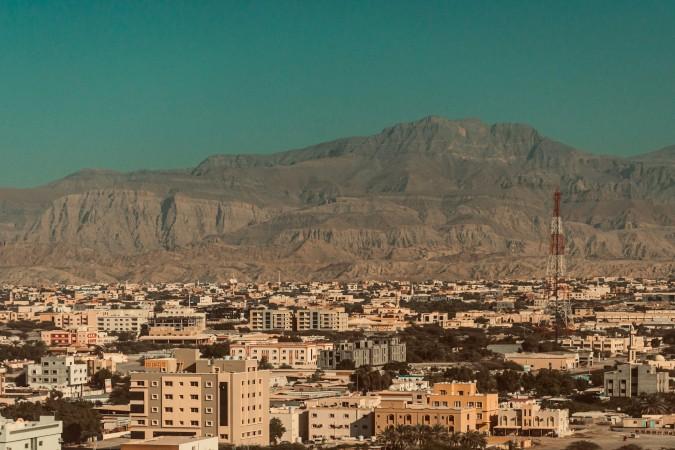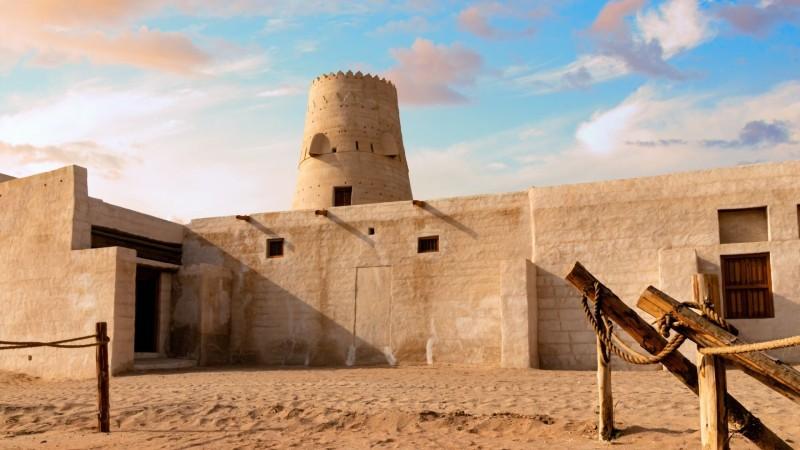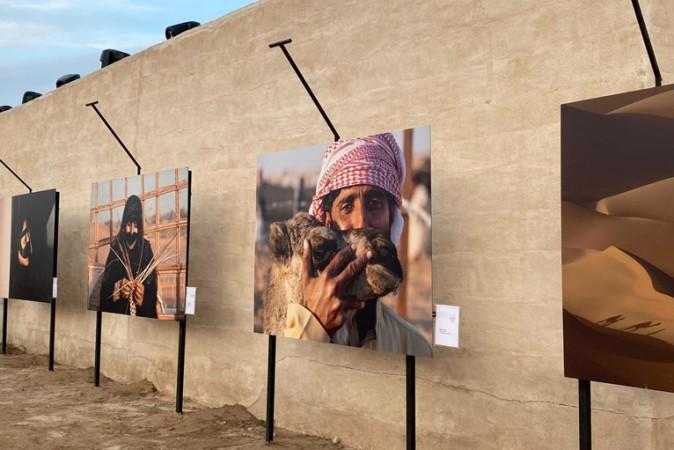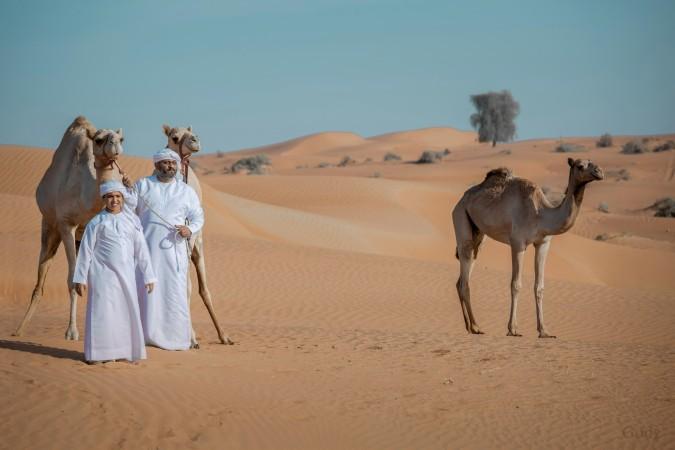Explore Ras Al-Khaimah - United Arab Emirates (UAE) Travel, Asia
Nestled between the rugged Hajar Mountains and the glistening waters of the Arabian Gulf, Ras Al-Khaimah (RAK) is a hidden gem for travelers seeking both adventure and relaxation. As the northernmost emirate of the UAE, Ras Al-Khaimah offers a unique mix of natural beauty, rich history, and modern attractions. Whether you're interested in mountain hiking, exploring ancient forts, or unwinding on pristine beaches, RAK has something for everyone. Its strategic location, just a short drive from Dubai, makes it an accessible off-the-beaten-paths destination in the UAE.
Population: Approximately 400,000 in 2023.
Economy: Ras Al-Khaimah's economy is driven by tourism, real estate, manufacturing, and agriculture. It also has a growing industrial sector, with a focus on cement, ceramics, and pharmaceuticals.
Landmarks: Famous for the Jebel Jais, Khatt Springs, and the Al Marjan Island.
United Arab Emirates

Overview of Ras Al-Khaimah
History & Culture Influence
Ras Al-Khaimah is steeped in history, with its cultural roots going back thousands of years. Once a crucial stop along ancient trade routes, RAK has played a significant role in the region's maritime history. One must-see destination is Al Jazirah Al Hamra, a well-preserved ghost village that portrays traditional Emirati life before the oil boom. On the other hand, RAK's heritage is deeply influenced by Bedouin culture, which still thrives today in its local traditions, from falconry to handicrafts. Don’t miss the chance to explore Dhayah Fort, an 18th-century mud-brick fort perched on a hill, offering stunning panoramic views of the surrounding desert and mountains.
Interaction with the Locals
Ras Al-Khaimah is among the UAE's smaller emirates. The local citizens, known as Emiratis, make up a minority of the population, with the majority being expatriates from various countries. Emiratis in Ras Al-Khaimah are known for their strong connection to traditional Bedouin culture, which includes hospitality, family values, and customs rooted in the region's history.

Al Jazirah Al Hamra - © Ras Al Khaimah Official website
Top Attractions in Ras Al-Khaimah
Ras Al-Khaimah is home to a variety of must-see attractions, blending natural beauty with modern developments, making it a haven for adventure lovers and relaxation seekers alike.
Jebel Jais
For those seeking thrills, Jebel Jais, the highest mountain in the UAE, is the ultimate destination. This rugged mountain offers jaw-dropping views and an array of adventure activities. The Jebel Jais Zipline, the world’s longest zipline, promises a heart-pounding ride down the mountain. Hiking trails, with varying levels of difficulty, allow you to explore the rugged beauty of the area.
Khatt Springs
If you need to unwind, the Khatt Springs are the ideal destination. Known for their therapeutic hot springs, these natural pools are rich in minerals that are said to have healing properties. It’s a serene spot to unwind and soak in the peaceful ambiance of Ras Al-Khaimah’s desert landscape.
Al Marjan Island
Al Marjan Island offers a mix of luxury and beachfront leisure. This man-made island is home to some of RAK's top resorts, where you can indulge in spa treatments, enjoy water sports, or simply lounge on pristine beaches. Whether you’re traveling as a couple or with family, Al Marjan Island caters to all kinds of travelers.
Wadi Shawka
Wadi Shawka is perfect for those who love nature and adventure. This scenic valley offers hiking, mountain biking, and picnicking opportunities amidst picturesque landscapes of rocky terrain and lush greenery. The area is also known for its natural pools, which are popular for a refreshing dip after a long hike.

Jebel Jais - © Klickors Moe
Must-Try Dishes in Ras Al-Khaimah
Ras Al-Khaimah’s culinary offerings reflect the rich history and culture of the emirate, blending Emirati traditions with influences from the wider Middle Eastern and Asian regions. Here are some must-try local dishes that showcase the flavors of Ras Al-Khaimah.
- Al Harees: A staple during Ramadan and special occasions, Al Harees is a slow-cooked dish made with wheat and meat, typically lamb or chicken, cooked in a clay pot. It has a creamy, porridge-like consistency and is often flavored with a touch of salt.
- Machboos: Machboos is a fragrant rice dish, similar to biryani, cooked with a blend of spices such as cardamom, cinnamon, and cloves. It is typically served with chicken, lamb, or fish and is known for its rich flavors, thanks to the addition of dried lemon (loomi).
- Luqaimat: Luqaimat is a delicacy that anybody with a sweet tooth should eat. These little, deep-fried dough balls are typically drizzled with date syrup or honey and topped with sesame seeds. Crispy on the outside and soft on the inside, they are traditionally offered during Ramadan or other special occasions.
- Balaleet: A unique blend of sweet and savory, Balaleet is a breakfast dish made of sweetened vermicelli noodles spiced with cardamom, saffron, and rose water, served with a savory omelet on top. This contrast of flavors makes it a beloved traditional breakfast across the UAE.
- Madrouba: Madrouba is a hearty dish made by cooking rice, chicken, and a blend of spices until the mixture becomes thick and creamy, similar to risotto. It’s a comfort food in Emirati households and is known for its warming spices and satisfying texture.

Luqaimat - © MICHELIN Guide
Festivals & Local Celebrations
RAK Fine Arts Festival
Held annually, the RAK Fine Arts Festival is a prestigious event that brings together artists from around the world to showcase their works in painting, sculpture, photography, and film. This multi-week festival typically takes place in February at iconic locations such as the Al Jazirat Al Hamra heritage village or the Al Marjan Island, combining art with the rich history of Ras Al-Khaimah. Along with exhibitions, the festival offers workshops, film screenings, and live performances, making it a great opportunity for visitors to engage with the arts scene and local culture.
Awafi Festival
A favorite among both locals and tourists, the Awafi Festival celebrates Ras Al-Khaimah’s Bedouin heritage. Held in the Awafi desert, typically in the winter months, this festival features a mix of cultural and adventurous activities. Visitors can enjoy camel racing, off-road vehicle competitions, and dune bashing. The festival also has a heritage village, where guests can explore traditional Bedouin lifestyles through exhibitions, food stalls, and craft markets. The Awafi Festival provides a great opportunity to experience the emirate's connection to its desert roots and embrace adventure tourism in the stunning desert landscape.

RAK Fine Arts Festival - © GQ Middle East
What to Do in Ras Al-Khaimah
- Thrilling Activities: For adventurers, Ras Al-Khaimah is a paradise. The Jebel Jais Flight, the world’s longest zipline, offers a heart-pounding ride down the UAE’s highest mountain. The rugged terrain is also perfect for hiking, mountain biking, and even camping under the stars.
- Desert Safaris: Experience the magic of the desert with a thrilling desert safari. Explore the dunes in a 4x4 vehicle, enjoy camel rides, and witness traditional Bedouin performances like belly dancing and Tanoura shows in a desert camp.
- Heritage Tours: For a more laid-back adventure, heritage tours offer a glimpse into Ras Al-Khaimah's rich past. Visit ancient forts, historical villages, and Bedouin camps to experience the emirate's deep cultural roots.
- Spa & Wellness: Ras Al-Khaimah is also a haven for wellness seekers. Many luxury resorts offer spa treatments, wellness retreats, and holistic therapies to rejuvenate body and mind.
Shopping in Ras Al-Khaimah
- Traditional Souks: Visit the RAK Old Market, where you can find authentic Emirati products like spices, perfumes, textiles, and handcrafted souvenirs. Shopping in the souk offers a glimpse into the traditional Emirati way of life, with local artisans selling their goods and engaging with visitors.
- Modern Malls: For a more contemporary shopping experience, head to Al Hamra Mall or Manar Mall. These malls feature international brands, electronics, fashion, and dining options, making them perfect for tourists looking to shop and relax in a modern environment.
- Unique Souvenirs: Ras Al-Khaimah is known for its Bedouin jewelry, handcrafted from silver and other precious metals. You’ll also find beautifully designed ceramics, traditional camel leather goods, and textiles that make for perfect gifts or souvenirs.

Desert Safaris with the locals in Ras Al-Khaiman - © Godwin Bephin
Weather in Ras Al-Khaimah: Best Time to Visit
Ras Al-Khaimah experiences a desert climate, with distinct weather patterns throughout the year. Understanding these seasonal variations is key to planning the perfect trip.
Winter in Ras Al-Khaimah
Winter is the ideal time to visit Ras Al-Khaimah. From October to April, the weather is mild, with daytime temperatures ranging from 18°C to 28°C (64°F to 82°F). This is the perfect season for outdoor activities such as hiking in the Hajar Mountains, enjoying the beaches, or exploring cultural and historical sites. Evenings are cooler, so it’s wise to bring a light jacket. This is also the peak tourist season, as the pleasant climate attracts travelers looking to escape colder weather elsewhere.
Summer in Ras Al-Khaimah
From May to September, Ras Al-Khaimah experiences scorching temperatures, often rising above 40°C (104°F), with high humidity levels. This period is ideal for those seeking a quieter stay and focusing on indoor activities like spa treatments, dining at luxury resorts, or enjoying the cool waters of hotel pools. Outdoor activities are best reserved for the early mornings or late evenings, when temperatures are much lower. If you plan to visit during summer, pack light, breathable clothing, sunscreen, and plenty of water.

Winter is a perfect time to enjoy Ras Al-Khaimah, Awafi Festival - © The National
Essential Travel Information
Getting Around Ras Al-Khaimah
- Taxis: Taxis are a widely available and reliable form of transportation in Ras Al-Khaimah. They can be found in popular tourist areas, hotels, malls, and near major attractions.
- Car Rentals: Renting a car is a great option for travelers looking for flexibility, especially if you plan to visit the Hajar Mountains, Jebel Jais, or more remote areas. Car rentals are available at the airport and throughout the city.
- Public Buses: Ras Al-Khaimah has a public bus service that connects various parts of the city, including key areas such as malls, beaches, and central neighborhoods. Although not as extensive as taxi services, buses offer an affordable way to travel between popular spots.
ATM & Banking Services
ATMs are available in popular areas such as malls, hotels, and near tourist attractions, accepting most international debit and credit cards for withdrawing local currency, the UAE dirham (AED). Visitors can also find reliable currency exchange services in key locations like airports, shopping centers, and major areas. While credit cards are widely accepted in most hotels, restaurants, and shops, it’s recommended to carry some cash for smaller purchases or in traditional markets where card payments may not be available.
Where to Stay in Ras Al-Khaimah
- Luxury Resorts: For those looking for a lavish experience, Ras Al-Khaimah boasts a selection of world-class resorts that offer private beaches, opulent spa treatments, and gourmet dining experiences. These high-end resorts provide top-tier amenities, ideal for couples or families, and offer a blend of relaxation and adventure with a range of activities and personalized services.
- Mid-Range Hotels: Travelers seeking comfort at a more moderate price point can choose from a wide array of mid-range hotels that offer excellent service and convenient amenities. These hotels are often located near major attractions, shopping malls, and beaches, making them a great base for exploring the emirate.
- Family-Friendly Stays: Many resorts and hotels offer family-friendly facilities such as children’s play areas, kids' clubs, and spacious family suites. These properties often provide entertainment options like water parks, activities for kids, and family-oriented dining options, ensuring that everyone has an enjoyable and comfortable stay.
Articles for you

Explore Yala National Park - Sri Lanka Travel, Asia
Tucked away in Sri Lanka’s southeastern corner, Yala National Park is where wild nature meets deep tradition. Known worldwide for its leopard population, the park is also home to elephants, sloth bears, crocodiles, and hundreds of bird species. Beyond wildlife, Yala opens doors to a cultural landscape dotted with ancient temples, Buddhist ruins, and coastal villages. For travelers seeking more than just a safari, Yala offers a chance to explore eco-tourism, local communities, and sacred heritage sites.
Population: The Yala National Park area doesn’t have a human population.
Economy: The economy around Yala National Park thrives on a blend of eco-tourism, agriculture, and local services. Safari tours, eco-lodges, and cultural experiences drive steady income for nearby towns like Tissamaharama and Kataragama, supporting thousands of families.
Landmarks: Famous for Block I of Yala and wildlife encounters, including elephants, sloth bears, crocodiles, and exotic bird species.

Explore Galle - Sri Lanka Travel, Asia
Nestled on Sri Lanka’s southern coastline, Galle is a vibrant city where history meets the sea. Its cobbled streets, colonial architecture, and serene beaches make it a must-visit destination for travelers seeking a blend of culture, adventure, and relaxation. A UNESCO World Heritage site, Galle captivates visitors with its Dutch Fort, bustling markets, and friendly locals. Whether you’re exploring the ramparts at sunset or savoring fresh seafood by the shore, Galle promises an unforgettable journey into Sri Lanka’s heritage.
Population: Approximately 113,000 in 2023.
Economy: Galle’s economy thrives on tourism, trade, and fisheries. The city’s historic fort, colonial architecture, and coastal charm draw thousands of international visitors each year, making tourism its main economic driver. Fishing remains vital for local livelihoods, supplying fresh seafood across the region.
Landmarks: Famous for the Galle Fort, Dutch Reformed Church & Maritime Museum, and Unawatuna Beach.

Explore Bentota - Sri Lanka Travel, Asia
Nestled along Sri Lanka’s southwestern coast, Bentota is a tropical paradise that blends golden beaches, vibrant culture, and thrilling adventures. Famous for its calm waters, luxury resorts, and scenic river estuary, Bentota has become a top destination for travelers seeking both relaxation and authentic experiences. From serene beach walks at sunrise to adrenaline-pumping water sports, this coastal town offers a perfect balance of leisure and exploration. With its proximity to Colombo and Galle, Bentota is easy to reach, making it an ideal stop for both short escapes and extended holidays.
Population: Approximately 37,000 in 2023.
Economy: Bentota’s economy thrives mainly on tourism, which drives local businesses such as hotels, restaurants, and wellness retreats. The town also benefits from fishing, coconut cultivation, and handicrafts like wood carving and batik textiles. Many residents rely on the growing demand for water sports and Ayurvedic treatments, making tourism the backbone of both income and employment in the area.
Landmarks: Famous for Bentota Beach, Bentota River Safari, and Kande Vihara Temple.

Explore Mirissa - Sri Lanka Travel, Asia
Mirissa is a charming coastal town on Sri Lanka’s southern shoreline. Known for its golden beaches, turquoise waters, and vibrant marine life, it has become a must-visit stop for travelers exploring the island. Many come for whale watching, surfing, and sunset views at Coconut Tree Hill, but Mirissa offers much more than postcard beauty. The fishing boats you see anchored by the bay carry generations of stories. Local traditions, delicious cuisine, and a laid-back rhythm of life shape every visitor’s experience.
Population: Approximately 4,700 in 2023.
Economy: Mirissa’s economy is largely shaped by its coastal location. Fishing has long been the backbone of local livelihoods, with generations relying on the Indian Ocean for income. In recent decades, tourism has become the main driver of growth, thanks to whale watching, surfing, and beachside hospitality.
Landmarks: Famous for Mirissa Beach, Coconut Tree Hill, and Parrot Rock Bridge.

Explore Nuwara Eliya - Sri Lanka Travel, Asia
Tucked away in the Central Highlands of Sri Lanka, Nuwara Eliya is often called “Little England”. With its rolling tea plantations, cool misty mornings, and colonial charm, this mountain town feels like a step into another world. Travelers come here to breathe fresh air, walk through flower gardens, sip the finest Ceylon Tea, and enjoy a pace of life far from the island’s busy cities. Whether you’re drawn by scenic landscapes, heritage architecture, or the warmth of its people, Nuwara Eliya is a destination that blends nature, culture, and history in perfect harmony.
Population: Approximately 781,000 in 2023.
Economy: Nuwara Eliya’s economy thrives mainly on tea production, as it sits in the heart of Sri Lanka’s central highlands, famous worldwide for Ceylon Tea. The city also benefits from a growing tourism industry, attracting visitors with its colonial charm, cool climate, and scenic landscapes.
Landmarks: Famous for Gregory Lake, Hakgala Botanical Garden, and Victoria Park.

Explore Sukau - Malaysia Travel, Asia
Nestled on the banks of the Kinabatangan River in Sabah, Malaysian Borneo, Sukau is a destination where wildlife, culture, and conservation come together. Known as one of Asia’s top spots for river safaris and eco-tourism, this quiet village offers a front-row seat to encounters with Bornean orangutans, pygmy elephants, proboscis monkeys, and exotic birdlife.
Population: Approximately 1,400 in 2019.
Economy: Sukau’s economy is shaped by its riverine location and natural resources. Traditionally, the Orang Sungai community relied on fishing, small-scale farming, and forest gathering for their livelihood. Today, the village has shifted toward eco-tourism, with river cruises, jungle trekking, and homestays providing income.
Landmarks: Famous for the Kinabatangan River cruises, Gomantong Caves, and Ox-bow lakes and wetlands.
